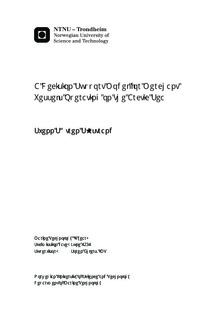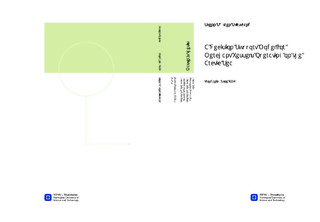| dc.description.abstract | With the ice cap diminishing rapidly on the Arctic Sea, the opportunity of using the Northern Sea Route (NSR) increases correspondingly. However, the climate and presence of ice on the NSR sets additional requirements, which represent an additional investment cost for the ship owner who s potentially willing to use the NSR. These additional investment costs, mainly represented by the ice classification, may be up to 12 % higher on total ship cost, depending on ice class, see Polach, Janardanan, and Ehlers (2012). These estimates are however uncertain, as are many other specifics of operating on the NSR; the degree of ice presence, the future fee cost on the NSR, insurance and additional maintenance cost together with varying operational time on the NSR. Numerous of assessments to determine the potential cost advantage of using the NSR as a transit route have been conducted throughout the recent years. These are, however conflicting in their conclusions and a final answer to the question is therefore lacking. Therefore, this thesis presents a decision support model (DSM) that can be used to support and assess the question of using the NSR or not based on own costs and available information. The DSM takes into account amongst others; ice conditions, the vessels parameters and its performance in ice, the operational window on the NSR, the initial investment cost of the vessel, and finally the operational and voyage costs. All these variables are changeable, and therefore the potential user of the DSM can alter them and see its effect on the calculated output, which are, amongst others: the ship merit factor (SMF), the life cycle cost (LCC) and the required freight rate (RFR).In addition to the developed DSM, a scenario where investing in a new ice classed vessel for use on the NSR in the summer season when there is less ice, and navigating the Suez Canal Route (SCR) the remaining annual operational time is presented. Through a brief assessment on the cargo flow between East-Asia and Europe, it was decided to implement the DSM for container shipping, as this is the main traffic on the route which could benefit from the shorter distance provided by the NSR. Based on this decision, how to combine the fixed schedule of liner shipping with the uncertainty of the NSR has been discussed. Here it has been concluded that the best way to combine the two routes for liner shipping is to slow steam the NSR when the ice conditions are favourable. Furthermore, the design requirements for ships navigating on the NSR have been reviewed in addition to the limiting parameters and constraints of the route. These and other special requirements for NSR navigation have been summarized and compared versus the open water requirements of the SCR. In order to implement performance in ice and open water into the DSM, prediction methods for brash ice resistance, net thrust and open water resistance have been studied. These formulas, in addition to schedule, fuel, operational and voyage costs, cargo amounts and other calculations have been implemented in the DSM. With the DSM developed, it has been evaluated through sensitivity calculations to ensure that it behaves reasonable when input parameters are altered. Moreover, two case studies have been conducted, both using the established scenario of using the NSR in addition to the SCR. In the first case study, the performance of a SCR vessel fitted with an ice class and the other requirements needed is assessed for the different ice classes of the Finnish Swedish Ice Class Rules (FISCR). In the second case study, the possibility of optimizing the design of the first case study to fit the schedule and route better, and thus yield more profit, is investigated through the DSM.Under the given assumptions and input used, all the FSICR classed vessels are found to be more profitable using the NSR in the summer season than the same vessel without ice class navigating only the SCR. However, with the profitability declining as the ice extent and thickness grows, the dictating element on NSR profitability is the ice conditions. The 1A ice classed vessel have been found to be the best alternative of the FSICR vessels, when also taking into consideration the ice capabilities of the 1A ice class with respect to ice thickness. Results of the second case study show that having an optimized vessel for the specific route and schedule is important in order to maximize profit as the optimized 1A ice classed vessel show better performance in all calculated results and ice scenarios.The economic advantage of using the NSR under the given scenario is however marginal. And the potential user of the NSR must therefore take into account the additional risk and uncertainty in terms of ice navigation and unforeseen expenses of using the NSR, before making the final decision. With increasing traffic over the recent years, it is well established that using the NSR is technically feasible. Nevertheless, in order to have shipping on the NSR on a regular basis, one must first and foremost have ice conditions that permit safe, economic and consistent navigation. Secondly, there must be a consistent fee system, which does not take away the benefit of the shorter distance in addition to shorter lead-time for booking NSR assistance. With these prerequisites in place, use of the NSR can be beneficial financially and in terms of reduced emissions. | nb_NO |

